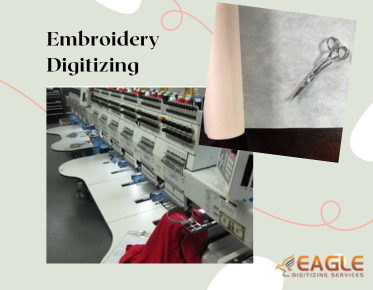Embroidery Care: Say Goodbye to Thread Tension Problems
Thread tension—two simple words that hold a treasure trove of complexities in the world of embroidery. It is the delicate balance between the upper and lower threads, a dance that, when executed flawlessly, results in magnificent embroidery. However, when things go awry, the consequences can be far from appealing. Recognizing the importance of thread tension is vital for every embroiderer. Mastering this intricate art is the key to achieving professional results, ensuring that each stitch contributes to the overall beauty of the design. If this post spurred your interest and you want to find out more about Embroidery Digitizing, please feel free to contact us.
What Is Thread Tension and Why It Matters
Thread tension refers to the amount of resistance applied to the threads as they feed through the embroidery machine. This tension influences how the threads interlace, ultimately dictating the stitch quality. When tension is just right, stitches lie flat and even, creating a polished finish. Conversely, improper tension can lead to a host of issues that mar the finished product, such as puckering, looping, and inconsistent stitches. Many embroiderers harbor misconceptions that thread tension is solely a mechanical setting. However, it’s an intricate balance that can be influenced by a multitude of factors including fabric type, thread weight, and even the design itself.
Identifying Thread Tension Problems: Signs to Look For
Recognizing Symptoms of Poor Thread Tension
Detecting thread tension issues early can save time and frustration. Signs of trouble often manifest visually. Look out for stitches that appear loose or bunched, creating an unkempt look. If the thread seems to loop on the underside of your fabric, it’s a telltale sign that the top thread is too loose. Conversely, tightly pulled threads can result in excessive puckering, giving the design an undesirable tight appearance.
How to Distinguish Between Bobbin and Top Thread Issues
Understanding whether the problem lies with the top or bobbin thread can streamline your troubleshooting process. If the top side of your design looks good but the underside reveals chaos, the bobbin tension may be at fault. On the flip side, if the top side exhibits loose loops, check the tension settings on the upper thread. Observing these patterns will help isolate the source of the issue.
Common Problems: Loops, Snags, and Gaps
Thread tension problems often manifest in various forms. Loopy stitching occurs when the top thread fails to pull the bobbin thread up adequately. Snags arise from the thread catching on fabric or machine components, disrupting the flow of stitching. Gaps in the embroidery indicate insufficient coverage, often resulting from incorrect tension or poorly digitized designs. Familiarizing yourself with these common issues is the first step in remedying them effectively.
Understanding Your Embroidery Machine’s Tension Settings
Overview of Tension Controls: Bobbin and Top Thread
Most embroidery machines have separate tension controls for the top and bobbin threads. The top thread typically runs through a series of tension discs that adjust the amount of resistance as it feeds into the needle. The bobbin, on the other hand, has its own tension mechanism, which is equally important. Each control interacts with the other, creating a symphony of tension that ultimately dictates stitch quality. Understanding how these settings work in concert can help you make more informed adjustments.
How to Read Your Machine’s Tension Guidelines
Every embroidery machine comes with manufacturer guidelines that provide a baseline for tension settings. These guidelines offer a starting point for different fabric types and thread weights, which can be invaluable as you navigate the complexities of thread tension. Always refer to these instructions, as they serve as a compass in your journey to achieve optimal results.
The Role of Different Needle Types in Thread Tension
The needle you choose can significantly influence thread tension. Needles come in various sizes and types, designed for different fabric weights and applications. A larger needle, for instance, can create larger holes in the fabric, affecting how the thread lays. Conversely, a smaller needle may lead to excessive friction, causing thread breakage or uneven stitches. Familiarize yourself with needle options to enhance your machine’s performance and ensure appropriate tension.
Preparing for Troubleshooting: Gather Your Tools
Essential Tools for Adjusting Thread Tension
Before diving into troubleshooting, gather your toolkit. Essential items include a set of screwdrivers for adjusting tension controls, scissors for snipping threads, and a seam ripper for any necessary corrections. Having the right tools on hand can make the troubleshooting process smoother and more efficient.
The Importance of Using Quality Threads
Using high-quality threads is crucial in maintaining consistent tension. Cheap threads can fray or break more easily, leading to frustration and additional tension issues. Invest in reputable thread brands that cater to your specific embroidery needs. This small choice can yield big rewards in the quality of your finished work.
Keeping Your Workspace Organized for Efficiency
A disorganized workstation may result in an organized mind. Keeping your area organized not only enhances your efficiency but also reduces the likelihood of errors. Designate a space for your tools and threads, ensuring everything is within reach. An organized environment fosters creativity and allows you to focus on perfecting your embroidery techniques.
Adjusting Thread Tension: Step-by-Step Guide
How to Correctly Adjust Top Thread Tension
Adjusting the top thread tension is a straightforward process. Start by threading your machine as per the manufacturer's guidelines. Once threaded, perform a test stitch. If the stitches appear too loose, gradually tighten the tension dial by a quarter turn and test again. Continue this process until you achieve a balance that allows the thread to sit evenly on the fabric.
Fine-Tuning Bobbin Tension: A Comprehensive Approach
Bobbin tension adjustment requires a slightly different approach. Begin by removing the bobbin case from the machine. Locate the tension adjustment screw and turn it slowly, either tightening or loosening based on your previous tests. Reinsert the bobbin and perform sample stitches. Keep fine-tuning until you reach that sweet spot where the stitches lay perfectly.
Making Adjustments Based on Fabric Type
Different fabrics necessitate different tension settings. Heavier fabrics like canvas may require more tension, while lighter fabrics, such as silk, call for a gentler touch. Experimenting with tension adjustments based on fabric type will enhance your overall embroidery quality, leading to beautiful, professional-looking designs.
Testing Your Adjustments: The Importance of Sample Stitching
How to Create Test Samples for Tension Evaluation
After making adjustments, creating test samples is essential for evaluating your changes. Use a scrap piece of the same fabric and thread to stitch out a small design. This not only saves fabric but also allows for controlled testing. Ensure your samples are representative of your final project to gain accurate insights.
What to Look For in Your Test Stitching
When assessing your test stitching, look for evenness in stitch density and alignment. Check both the top and underside of the fabric. There should be no visible loops or puckering, and stitches should lie flat against the fabric. Take notes on any issues observed, as they can guide your next adjustments.
Adjusting Based on Test Results: Finding the Perfect Balance
Finding the perfect tension balance can be a trial-and-error process. After analyzing your test samples, make further adjustments as needed. It’s a dance of sorts—sometimes delicate, sometimes bold. Trust your instincts, and don’t hesitate to repeat the testing process until you find the ideal tension settings.
Troubleshooting Common Thread Tension Issues
Dealing with Loopy Stitching: Causes and Solutions
Loopy stitching is a frustrating yet common issue. If the upper thread is too loose, tighten the top tension setting. Alternatively, if the bobbin tension is excessive, loosen it slightly. Always perform test stitches after making changes to verify the effectiveness of your adjustments.
Fixing Tight Stitches: Identifying the Problem
Tight stitches can result in fabric puckering or even thread breakage. Begin by loosening the top thread tension and testing again. If the problem persists, check the bobbin for excessive tension. Adjusting both tensions incrementally will help you find a more manageable setting.
Addressing Uneven Stitching: Tips for Consistency
Uneven stitching can be the bane of any embroiderer’s existence. Ensure that your fabric is hooped securely without any slack. A poorly hooped fabric can lead to inconsistent tension and stitch quality. Additionally, check that your needle is suitable for the thread and fabric. Regularly inspect and clean your machine to prevent buildup that can interfere with smooth stitching.
Understanding the Influence of Fabric and Thread Choices
How Fabric Weight Affects Thread Tension
The weight of your fabric plays a pivotal role in determining appropriate thread tension. Heavier fabrics will require more tension to secure the thread, while lighter fabrics necessitate a gentler approach. Understanding the nuances of fabric weight will empower you to make informed decisions that yield beautiful results.
Choosing the Right Thread for Different Fabrics
Thread choice should align with the fabric you are using. Polyester threads are versatile and work well with a variety of materials, while cotton threads add a charming, vintage feel. Matching the thread type to the fabric ensures a cohesive look and helps mitigate tension issues.
The Impact of Different Stitch Types on Tension
Different stitch types can also affect thread tension. For instance, decorative stitches often require different tension settings than standard satin stitches. Familiarize yourself with how each stitch interacts with the fabric and thread, allowing for precise adjustments tailored to your design.
Working with Digitized Designs: Ensuring Compatibility
How Design Density Affects Thread Tension
Design density can significantly impact thread tension. Denser designs often require tighter tension settings to ensure that threads do not pull excessively on the fabric. Conversely, lighter designs may necessitate a looser tension to avoid puckering. Understanding this relationship will help you adapt your settings accordingly.
The Role of Stitch Types in Digitized Designs
Different stitch types within a digitized design can have varying effects on tension. For instance, fills may require different settings compared to outlines or decorative stitches. Take the time to analyze your design and adjust tensions based on the specific needs of each stitch type.
Tips for Adjusting Digitized Designs for Better Tension
When working with digitized designs, it’s essential to anticipate tension issues. Consider the fabric and thread choices before starting your project. If certain areas appear too dense, adjust the stitch count or density in your software before stitching. Anticipating potential tension issues can save you time and headaches later. For the premier online embroidery digitization, feel free to connect with us
Mastering thread tension is a journey filled with experimentation and refinement. Embrace the process, and allow yourself to learn from each project. As your skills develop, so too will your understanding of how thread tension influences your embroidery. With patience and practice, achieving flawless results is within reach. Take pride in your ability to navigate the intricacies of thread tension, knowing that your artistry will shine through in every stitch.



